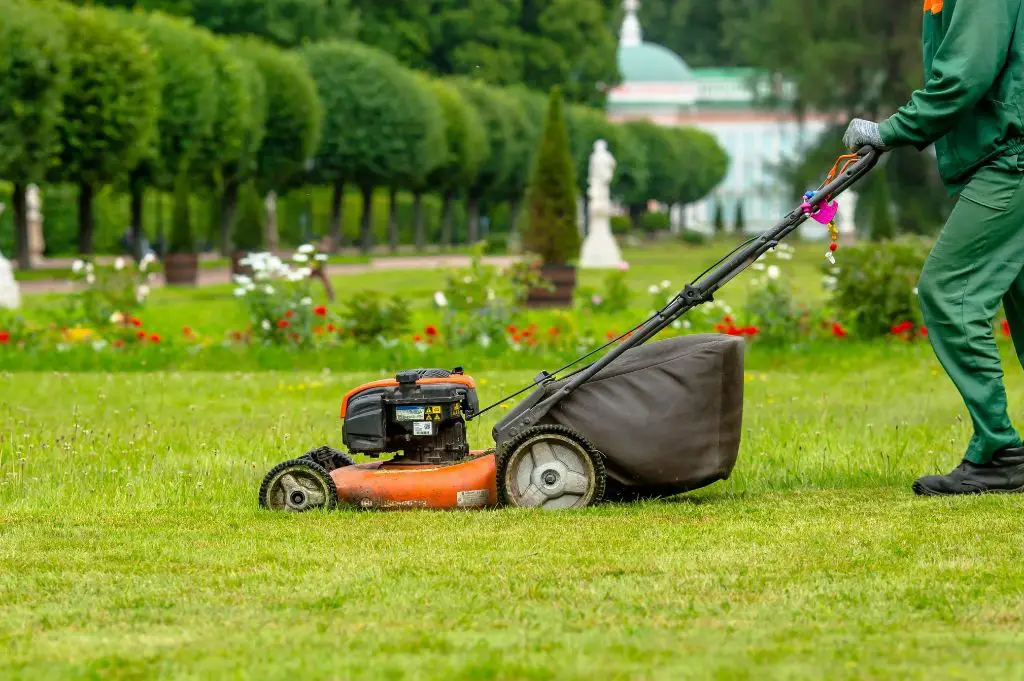Self-propelled lawn mowers have engines that power the wheels, so they are designed to be easier to push than traditional push mowers. However, there are some factors that can make self-propelled mowers feel harder to push.
Page Contents
Lawn and Terrain
The type of lawn and terrain you are mowing can impact how easy a self-propelled mower is to push. Thick, dense grass and hills make mowing harder compared to flat terrain and thinner grass. The engine assist helps, but doesn’t eliminate the extra effort needed on tougher lawns.
Mower Condition
A self-propelled mower with a worn transmission, low oil, or other mechanical issues will be much harder to push than one that is properly maintained. The engine drive won’t work as efficiently if the mower needs maintenance or repairs.
Drive System
Some self-propelled mower models have more heavy-duty transmissions and robust drive systems than others. Less expensive models often have lighter transmissions that don’t provide as much power assist. Check specifications if the drive system is an important feature for you.
Wheel Size
Larger rear wheels make it easier for self-propelled mowers to tackle rough terrain. Smaller plastic wheels are more prone to getting stuck in dips or thicker grass. Models with small wheels tend to be harder to push overall.
User Expectations
If you expect a self-propelled mower to feel completely effortless to push, you may be disappointed. While the drive system reduces effort, you still need to guide the mower and exert some force, especially in thick grass. The power assist works best when you walk at a steady, brisk pace.
Weight
Heavier self-propelled mowers with more powerful engines and thick decks can be more difficult to get moving from a standstill. But the weight makes them better at powering through tall, dense grass once the drive system engages.
Speed Settings
Some self-propelled mowers have variable speed settings. Faster settings are harder to push and control than slower speeds. Use an appropriate speed for the mowing conditions rather than maximum speed.
Drive Function
Check that the drive control lever is fully engaged when mowing. If it’s slightly disengaged, it will make the mower act more like a traditional push model. User error with the drive control is a common cause of self-propelled mowers feeling “too hard” to push.
Maintenance and Use Tips
Here are some tips to help keep your self-propelled mower running efficiently and easy to push:
- Regularly change engine oil and air filters
- Keep drive system parts lubricated
- Replace worn drive belts
- Ensure proper tire pressure
- Adjust speed control and engage drive fully
- Go slower in thick grass
- Stay at a steady pace when mowing
When to Get Help
Most issues that make self-propelled mowers difficult to push can be resolved with regular maintenance and proper use. But if you notice a distinct loss of power assist, it likely signals a more serious drive system problem that requires repair by a small engine expert.
Key Takeaways
- Lawn terrain, mower condition, wheel size, and user error can impact how easy a self-propelled mower is to push.
- Regular maintenance helps self-propelled drive systems run efficiently.
- Slow down and adjust speed settings when mowing thick grass.
- Seek repairs if drive power is completely lost.
While self-propelled mowers require some physical effort to operate, especially on hills and dense grass, most issues that make them hard to push can be mitigated with proper use and care. Maintain your mower well and adjust your pace and settings for optimal ease of pushing.
